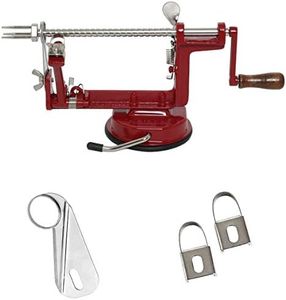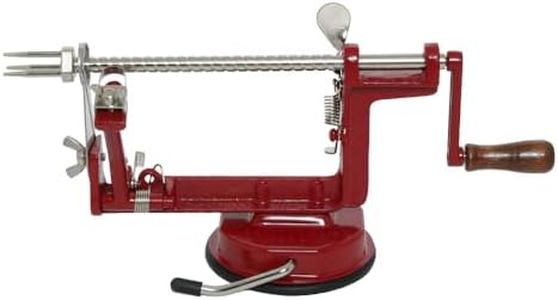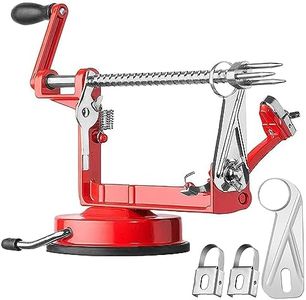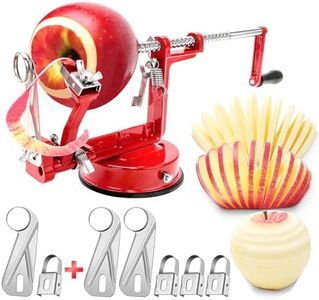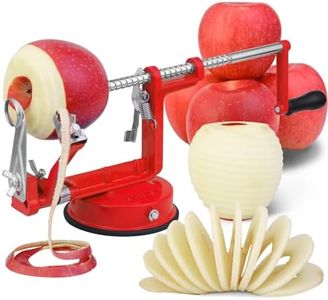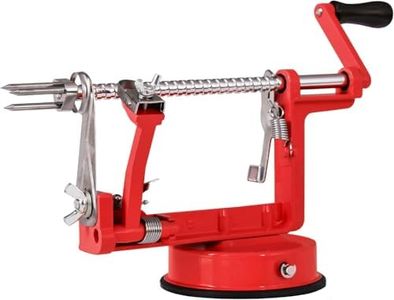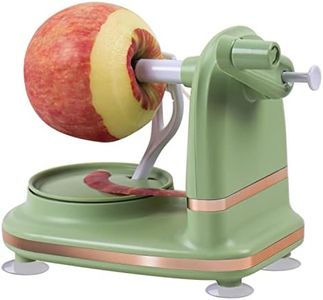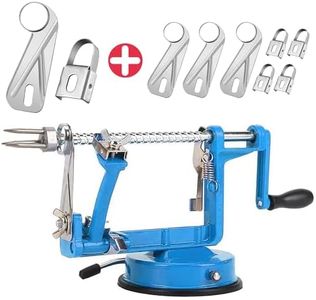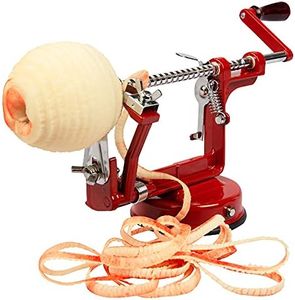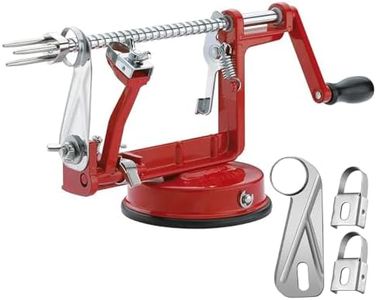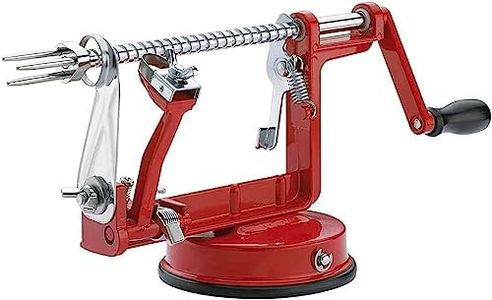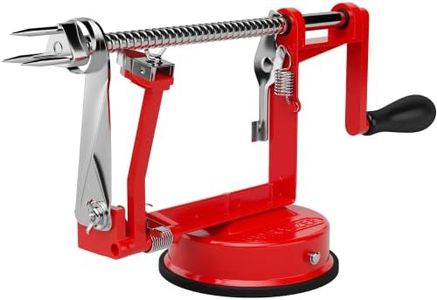We Use CookiesWe use cookies to enhance the security, performance,
functionality and for analytical and promotional activities. By continuing to browse this site you
are agreeing to our privacy policy
10 Best Apple Peeler Corer Slicers
From leading brands and best sellers available on the web.By clicking on a link to a third party's website, log data is shared with that third party.
Buying Guide for the Best Apple Peeler Corer Slicers
Choosing an apple peeler corer slicer can make preparing apples for snacks, pies, or preserves much easier and faster. The right tool will save you time and effort, delivering nicely peeled and perfectly sliced apples with minimal waste. Before making a purchase, it's important to consider how you'll be using it, how often, and your kitchen space. A good fit depends on whether you need speed, precision, or ease of cleaning, so understanding the key features will help you find the best tool for your needs.Peeling, Coring, and Slicing FunctionsThe main feature of these tools is their ability to peel, core, and slice apples—sometimes all at once. A model that performs all three functions automatically speeds up apple prep and is ideal for large batches, whereas some simpler models may only peel or only core and slice. Think about whether you need to process many apples quickly for pies, dried fruit, or snacks, or if simple peeling is good enough. Multifunction models give more versatility, but may be bigger or have a steeper learning curve.
Material and Build QualityApple peeler corer slicers are commonly made from metal, plastic, or a mix of both. Metal models are generally stronger and more durable, handling tougher jobs and lasting longer, while plastic models are lighter and easier to store but may not hold up to frequent, heavy use. If you plan to use your peeler regularly, especially with hard apples, a metal unit is a better pick. For occasional use or easy handling, a plastic model can do the job.
Mounting MechanismSome peelers attach to your countertop or table with a suction base or clamp, while others are hand-held. Suction bases are easy to set up and move, but may not hold as strongly on all surfaces. Clamps are sturdier but require an edge to grip and take longer to attach. If you need stability for working through a big batch, a clamp or strong suction base is best. If you want something more portable, look for a hand-held option.
Blade AdjustabilityAdjustable blades let you control how thick or thin the peels and slices are. This is useful if you like chunky apple rings for snacks or thin slices for pies. If you want versatility, pick a model where you can adjust blade depth and slice thickness—the ability to replace or sharpen blades can add to the tool’s longevity and usefulness. If you just want standard slices or peeling, a fixed-blade model is simpler and often quicker to use.
Ease of CleaningBecause these tools have moving parts and sharp blades, cleaning them can be tricky. Some can be taken apart for a more thorough wash, and some are dishwasher safe. If you want quick and easy cleaning, look for a model with fewer parts, smooth surfaces, or dishwasher-safe labeling. If you don’t mind spending a little extra time for a tight, precise mechanism, just be prepared to spend an extra minute or two cleaning up.
Size and StorageThe size of the peeler can affect both its usability and where you keep it. Large, sturdy models are great if you have counter space and expect to use the tool often, especially for batch jobs. Smaller or foldable models save space and are easier to store in smaller kitchens. Think about where you'll keep the tool and how much space you're willing to give up to it.

